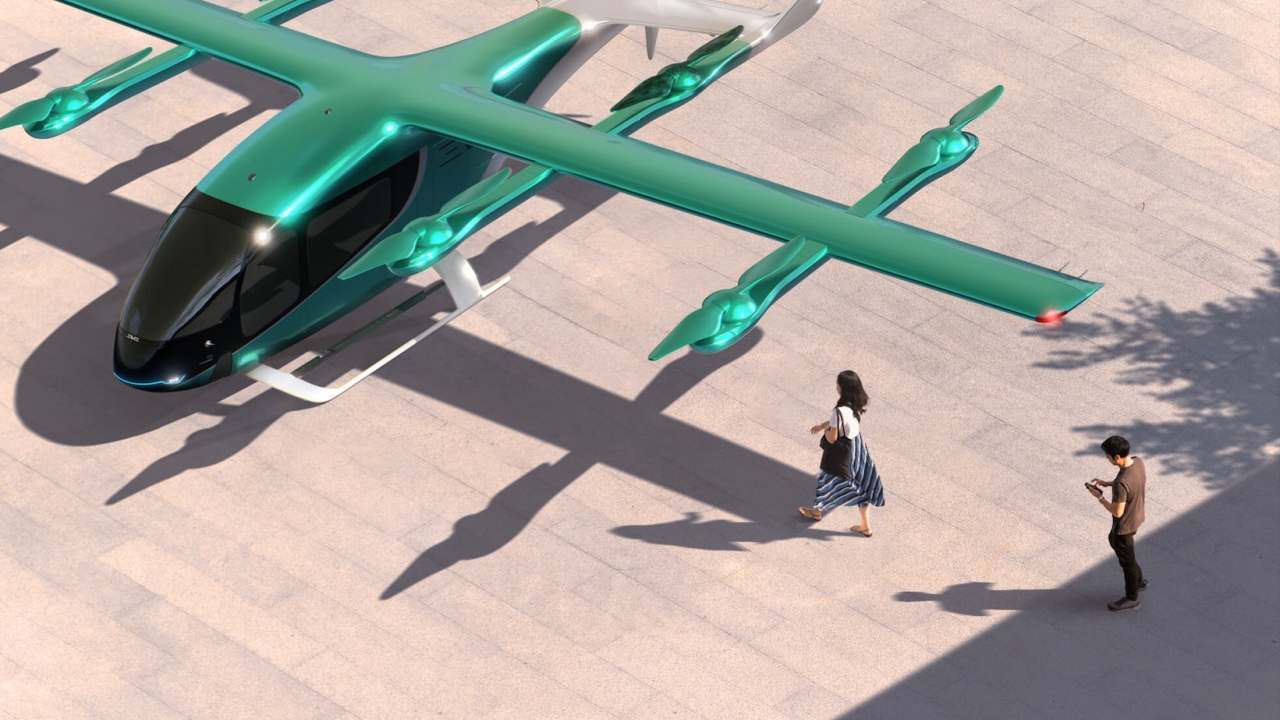Saudi mobilises its AAM roadmap
Saudi Arabia is putting policies in place that it hopes will make the country a leader in the rapidly evolving world of Advanced Air Mobility.

It’s a brave new world out there, and it’s getting closer every day. Decades of science fiction films in which the skies over cities are filled with all types of exotic flying machines seem on the verge of coming true.
Small cargo-carrying drones are already being used in several parts of the word, dropping urgently-needed medicines to locations perhaps 10-20 miles from their launch point. Larger uncrewed aerial vehicles (UAV) are being trialled to deliver mail to remote locations.
And now, the first generation of electrically-powered vertical take-off and landing (eVTOL) aircraft are expected to be in service within the next three years. A few years further down the road, those eVTOLs will be able to fly passengers wherever they want around a city without a pilot at the controls.
While the first generation of eVTOL aircraft will probably be used to transport groups such as arriving airline first- or business-class passengers to their final destinations, the plan globally is that at some point in the not-too-distant future, the aircraft will be as ubiquitous as taxis.
Of course, that scenario depends on the availability of ‘vertiports’, as they are becoming known, in urban areas. This is likely to be more difficult in older cities, such as those in Europe – a recent UK media briefing by existing airport operators and others made it clear that finding the necessary space and recharging facilities in a city such as London is fraught with difficulties – but this is likely to be much less of a problem in Gulf nations.
With all these factors now in play, Saudi Arabia has announced the Advanced Air Mobility (AAM) in Saudi Arabia initiative, developed by the General Authority of Civil Aviation (GACA).
Enabling Advanced Air Transport in the Kingdom follows 2022’s release of the Environmental Sustainability Development Plan in Civil Aviation, which seeks to establish a regulatory framework based on best global practices, aimed at minimising aviation's environmental footprint.
This is an ambitious roadmap to make the Saudi air transport sector the safest and most developed in the Middle East.
The initiative includes a wide range of solutions covering the various classes of aircraft mentioned above. These technologies will be characterised by high technical capabilities, says GACA, and will also have the practical effect of alleviating congestion on roads and facilitating easy access to remote areas in the country. The aim is that this will, contribute to overall economic and social development in the country.
The AAM initiative includes the steps that must be taken to create a comprehensive road map that places AAM at the forefront of the aviation industry, said Capt. Sulaiman Al-Muhaimidi, executive vice president of GACA for aviation safety and environmental sustainability.
The new generation of airborne vehicles will revolutionise the movement of passengers and goods, but will also allow faster responses to emergencies, medical evacuation and aid to the population if a natural disaster strikes.
Al-Muhaimidi said that tests had been conducted in the Kingdom that included trials of new air vehicles in various types of terrain and climatic conditions. These had produced positive results. Additionally, the use of electric power by most of the new generation of vehicles will add to sustainability and contribute to Saudi Arabia’s plans to achieve net-zero carbon emissions by 2060.
"We're not just building a new mode of transportation; we're creating the backbone for the next era of economic and social development in Saudi Arabia," he said.
The new policy document expresses the country’s clear ambition to at least rival the neighbouring UAE, which for many years has pushed the aviation sector to the front of its economy.
International cooperation constitutes a major aspect of the AAM journey in the Kingdom, as memoranda of understanding (MoU) were signed with a number of countries, including South Korea, Singapore and China, in addition to concluding agreements with leading companies in designing and manufacturing AAM aircraft to ensure that the Kingdom achieves an advanced position in this field, especially in the safety and development sectors.
Stay up to date
Subscribe to the free Times Aerospace newsletter and receive the latest content every week. We'll never share your email address.


